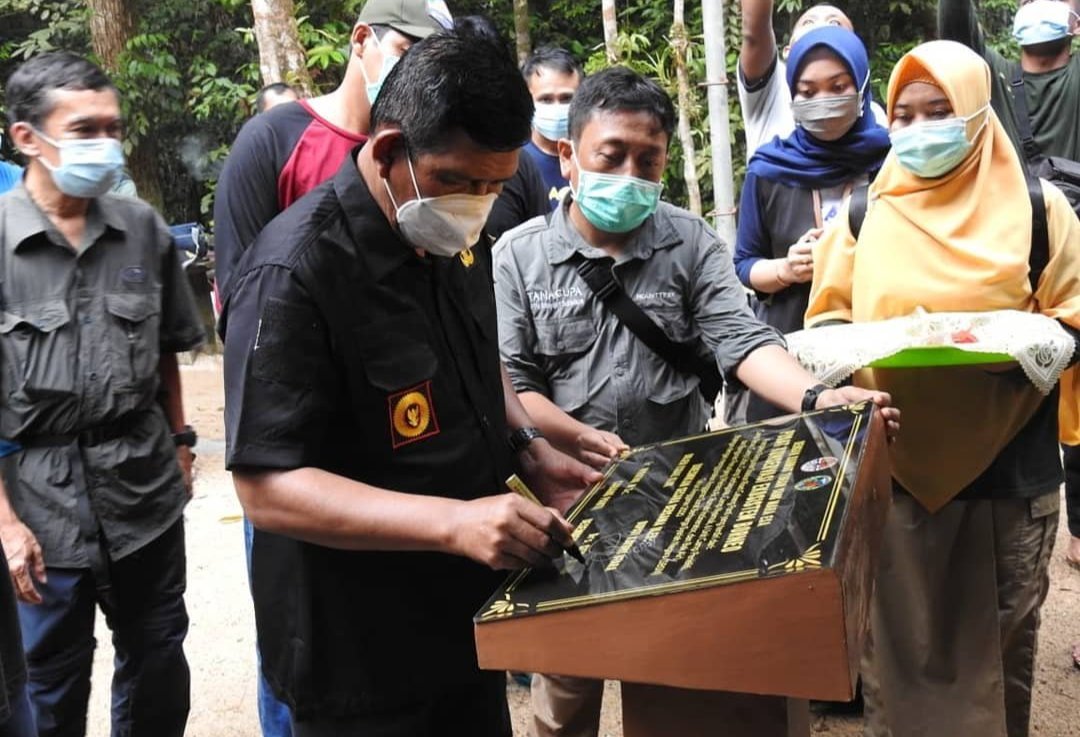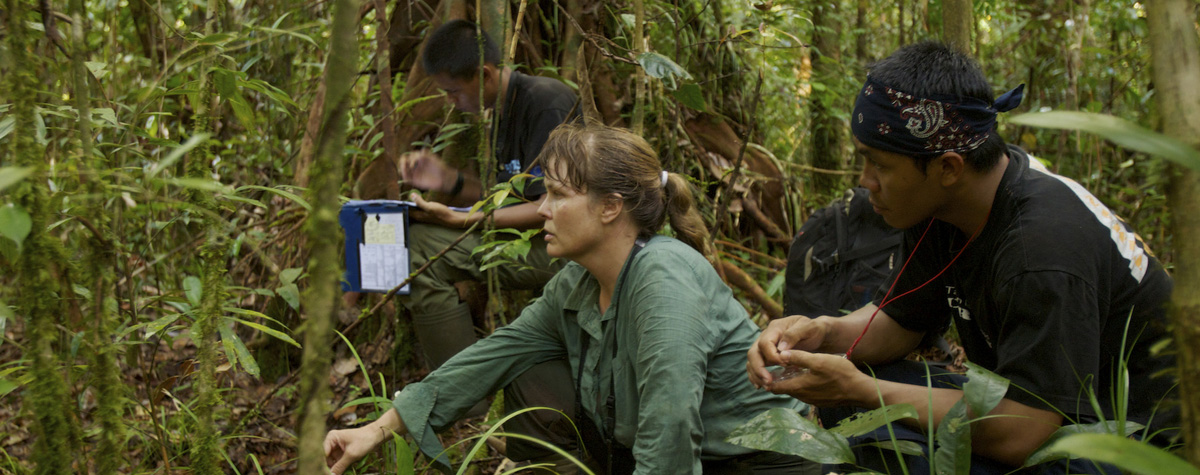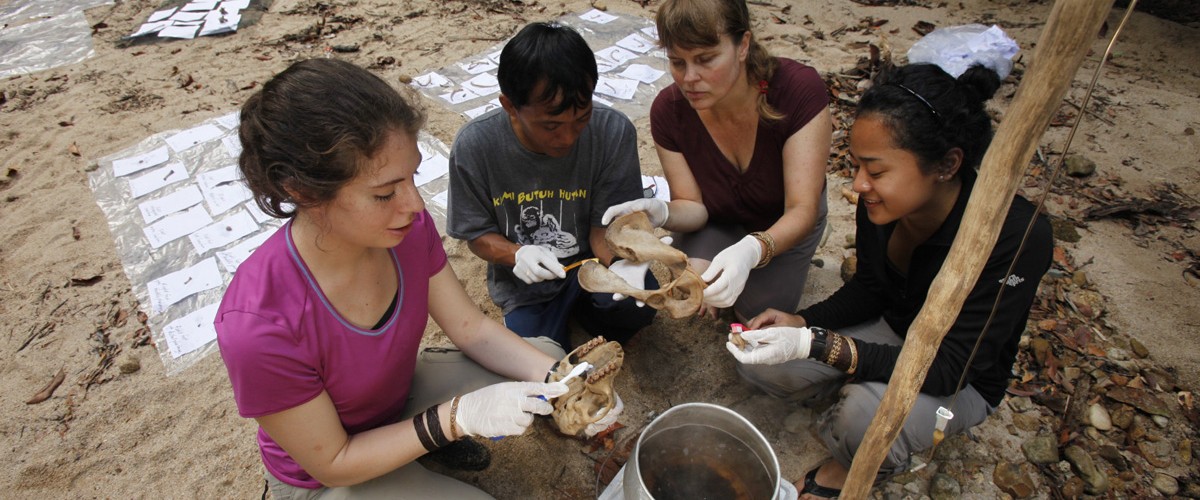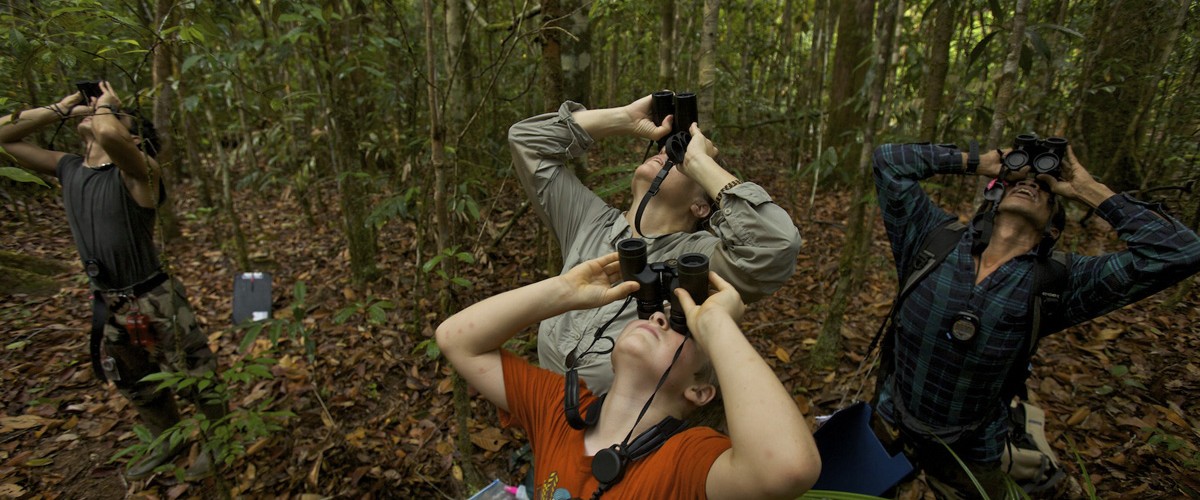By Edi Rahman, Field Director, Petrus Kanisius, Communications Officer, and Cheryl Knott, Executive Director
The Cabang Panti Research Station, in Gunung Palung National Park, is home to our long-term orangutan research project. Recognized by the United Nations Great Ape Survival Project as a conservation priority area, GPNP and the surrounding forests are one of the most important blocks of orangutan habitat and one of the only remaining tracts of lowland Dipterocarp rainforest in Borneo. The area has a very high biodiversity conservation value, providing critical habitat for many endangered species, including orangutans, proboscis monkeys, gibbons, hornbills and sun bears. It also provides clean water to surrounding regions and is a buffer against climate change, with deep peat forest acting as a carbon sink and mitigating flooding and damage to coast farmlands from tidal salinity. The Park’s proximity to the Java Sea and its small, isolated mountain range, creates 8 distinct ecological zones. This biodiversity of animals and plants has attracted both national and international researchers to conduct studies in the GPNP area.

The Cabang Panti Research Station is located in the west-central area of the Park. In 1984, Dr. Mark Leighton founded the station in collaboration with Dr. Dedy Daernedi of the Indonesian Institute of Sciences. Dr. Leighton’s research at Cabang Panti continued until 1996. The Gunung Palung Orangutan Project was founded by Dr. Cheryl Knott in 1994, and a second long-term study, the One Forest Project, was established by Dr. Andrew Marshall in 2000. In the early 2000s, GPNP experienced substantial illegal logging, and the station was forced to shut down in 2003, leading to building deterioration. The station was then rebuilt in 2007, with design spearheaded by Dr. Marshall, and funded jointly by Dr. Marshall and Dr. Knott. This rebuilding of 2020 ushers in a new era, with improved and expanded research and living spaces that will provide more opportunities to current and future generations of Indonesian and foreign students and scientists.
Since the station is located deep in the primary rainforest, over 12 kilometers from the nearest village, buildings can quickly deteriorate, due to wood rot, termites, fallen trees and flooding. Thus, after more than a decade since the last major rebuilding, many of the camp structures were in need of some reconstruction. In 2019, GPNP Research Station Head, Endro Setiawan, with support from GPOCP Research Director, Wahyu Susanto, submitted a competitive proposal to the Indonesian Ministry of Forestry to have the station rebuilt. Excitingly, their proposal succeeded, and it was decided that Cabang Panti would become the new model research station for all of Indonesia!

All of the construction was funded by the Indonesian Ministry of Environment and Forestry, via a project through the Financial Ministry of Indonesia, with a budget of 8 billion rupiah (570,500 USD). The building was just finished last month and the inauguration ceremony was held on December 12. We welcomed special guests Bapak Citra Duani, Bupati (Regent) of the Kayong Utara Regency, and Bapak Sapto Aji Probowo, Sub-Directorate of the Director General of the Ministry of Environment and Forestry, as well as the Deputy Chief of Police and the Liaison Officer of Kayong Utara Regency, and the Head of the Sejahtera Village. Also in attendance were Yayasan Palung staff, National Park officers, long-term research counterparts from Universitas Nasional in Jakarta, and members of long-term collaborating institutions, Alam Sehat Lestari and International Animal Rescue.
The inauguration ceremony was marked by the cutting of a ribbon and the signing of a plaque at the front of the main station building. This was done by the Regent of Kayong Utara, who was serving as a representative of the Director General of the Ministry of Environment and Forestry.


The new station now has several buildings to support research, including a meeting hall, library, specimen room, laboratory, presentation room, lodging houses, and a place of worship. In a statement at the ceremony, Bapak Sapto declared that Cabang Panti is a model station, not only because of its good physical condition, but because of the potential for research. GPNP Head, Bapak Matheas Ari Wibawanto, went on to explain that Cabang Panti is a storehouse of knowledge that we must explore and share with the world to better our education and health. He also stated that the existence of Cabang Panti has had a positive economic impact on the surrounding community, as many members of local villages have been employed by the long-term research projects.

Later in the evening, a special tumpeng event was held, where guests shared a ceremonial Indonesian rice dish. The day ended with a series of presentations and the giving of awards. GPOCP Field Director, Edi Rahman, accepted an award from the Ministry of Environment and Forestry, officially recognizing GPOCP’s conservation and research activities, which have taken place in the GPNP area since 1999, and our strong partnership with the National Park Office. We are so grateful that the Indonesian government has sponsored this construction, and are excited that this new infrastructure will better support our research project. We are hopeful that in the coming year, when COVID-19 conditions improve and travel is safe, that we can welcome more researchers from around the world and share this beautiful research station!










